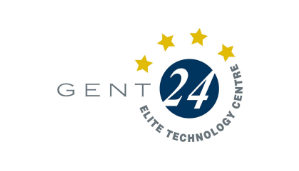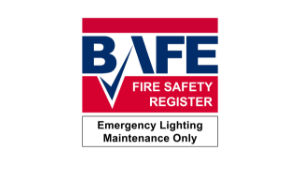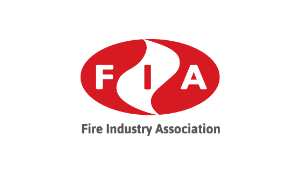Heritage sites are a testament to our history, culture, and architectural excellence. However, these treasured locations face unique challenges, particularly when it comes to fire safety. Preserving their structural integrity while ensuring modern safety standards requires a delicate balance and specialised solutions.
The Importance of Fire Safety in Heritage Sites
Fire poses a significant threat to heritage sites, not only due to the potential loss of irreplaceable artefacts and structures but also because many of these buildings were constructed before modern fire safety standards were established.
The devastating fire at Windsor Castle on November 20, 1992, is an important example of why rigorous fire safety measures are essential in heritage sites. The fire destroyed 115 rooms, including 9 State Rooms, and took 15 hours to control by 225 firefighters, causing significant structural and cultural losses. Many valuable artworks and historical artefacts were lost, representing an irreplaceable cultural loss and a need for robust fire solutions. Moreover, the restoration cost approximately £36.5 million and took 5 years, emphasising the financial burden of such disasters. There are 5 main lessons learnt from the Windsor Castle Fire, these are:
- Early Detection and Response: Advanced fire detection systems could have minimised the damage by identifying the fire sooner.
- Non-Invasive Fire Suppression: Modern suppression systems, like water mist or inert gas, prevent secondary damage compared to traditional methods.
- Comprehensive Risk Assessments: Regular inspections and proactive hazard mitigation are crucial.
- Tailored Solutions: Heritage sites need customised fire safety measures to preserve their unique architecture.
- Emergency Preparedness: Effective emergency plans and staff training are vital for quick and efficient responses.
Preservation of Structure and Contents
At CDS, we understand the critical importance of preserving historic sites, which serve as vital connections to our past, offering invaluable insights into cultural, architectural, and social histories. These sites often contain irreplaceable materials and artefacts that hold immense historical, artistic, and scientific value. Ensuring the preservation of both the structure and its contents is crucial, and one of the most significant threats to this preservation is fire. Fires can cause irreversible damage to historic materials and artefacts, effectively erasing pieces of our heritage forever.
Irreversible Damage to Historic Materials
Structural Vulnerability: Many historic buildings were constructed using materials and techniques that, while robust for their time, may not meet modern fire safety standards. Timber beams, thatched roofs, and other traditional materials are highly susceptible to fire. Once these materials are burned, the loss is permanent. Unlike modern buildings, where materials can often be replaced or restored, historic structures contain original materials that are integral to their authenticity and historical value.
Architectural Integrity: Fire can compromise the architectural integrity of a historic site. The unique designs, craftsmanship, and construction methods used in historic buildings are often one-of-a-kind. Damage to these structures can result in a loss of architectural details that cannot be authentically replicated, diminishing the historical accuracy and value of the site.
Preservation of Contents
Unique Artefacts: Historic sites frequently house artefacts such as documents, artworks, furniture, and personal belongings that have survived for centuries. These items provide a direct connection to the past, offering insights into the lives, technologies, and cultures of previous generations. Fire can obliterate these artefacts, resulting in the loss of irreplaceable historical records and cultural treasures.
Scientific and Educational Value: Artefacts and materials found in historic sites are often subjects of ongoing scientific research and educational programs. The loss of these items due to fire can halt important research projects and limit educational opportunities. For example, ancient manuscripts or early technological devices can offer valuable information about historical developments in science, technology, and culture. Their destruction would mean the loss of primary sources crucial for academic study.

Implementing Fire Safety Measures with CDS
Fire Prevention: At CDS, we believe the first line of defence against fire in historic sites is prevention. This involves regular maintenance and inspection of electrical systems, heating sources, and any potential fire hazards. Installing fire-retardant materials where appropriate and ensuring that fire-prone areas are identified and managed can significantly reduce the risk of fire.
Early Detection and Response: Early detection systems, such as smoke detectors and fire alarms, are critical in historic sites. Our solutions at CDS ensure these systems are linked to central monitoring stations that can alert emergency services promptly. Quick response is essential to minimising damage and preventing the spread of fire.
Suppression Systems: Installing fire suppression systems can be a delicate issue in historic buildings due to potential water damage and the need to preserve the site’s aesthetic and structural integrity. Not only does CDS offer suppression systems, our sister company, Bryland Fire Protection are fire suppression specialists making Obsequio Group the right choice for fire suppression solutions. Bryland specialises in gas-based suppression systems, which do not cause water damage, making them ideal for protecting valuable contents without harming the structure. Their expertise ensures that historic sites are safeguarded with the most advanced and suitable fire suppression technologies available.
Emergency Planning and Training: Developing and regularly updating a comprehensive fire emergency plan is crucial. We ensure that staff and volunteers are trained in fire safety protocols and emergency response procedures. Regular fire drills ensure that everyone knows their role in the event of a fire, which can save lives and reduce damage to the site and its contents.
Building Layouts: Heritage buildings often have complex layouts, including narrow corridors, hidden passages, and multiple levels, which can complicate fire safety implementations. CDS addresses these challenges with the following custom fire detection placement strategies:
- Strategic Detector Placement: Our wireless smoke and heat detectors can be placed in hard-to-reach areas without extensive wiring, ensuring comprehensive coverage even in the most complex layouts.
- Zonal Detection Systems: Dividing the site into zones for more manageable and precise detection and response, reducing false alarms and ensuring targeted suppression efforts.
Compliance with Modern Standards: Balancing the need to meet modern fire safety standards while preserving the historical integrity of heritage sites is a delicate task. CDS ensures compliance without compromising the site’s authenticity through the following approaches:
Adaptive Safety Solutions
- Non-Destructive Systems: Our water mist and inert gas suppression systems provide effective fire protection without causing structural damage or leaving residue, crucial for maintaining the site’s historical integrity.
- Discreet Installation: Our systems are designed to blend seamlessly with the site’s architecture, ensuring that modern fire safety measures do not detract from the historical aesthetic.
Ongoing Risk Assessments and Upgrades
- Regular Audits: Continuous evaluation and updating of fire safety measures ensure compliance with the latest standards. Our experts conduct regular audits to identify new risks and recommend upgrades to existing systems.
- Training and Preparedness: Collaborating with heritage site managers to develop and implement comprehensive emergency response plans, including training for staff and volunteers, ensures preparedness and compliance with safety regulations.

Challenges and Best Practices
Implementing fire safety in historic sites involves addressing several challenges:
- Non-Invasive Technologies: Utilising fire detection and suppression systems that do not harm the structure or aesthetic of the site.
- Customised Solutions: Each site requires tailored solutions that consider its unique architecture and materials.
- Regular Risk Assessments: Continuous evaluation and updating of fire safety measures to address evolving risks and standards.
Drax Technology Solutions
CDS and Drax Technology offer advanced solutions that can effectively address these challenges, ensuring both compliance with fire safety regulations and the preservation of heritage sites. Drax Technology complements CDS by offering sophisticated monitoring and management systems that ensure ongoing safety and compliance:
-
Early Detection and Response:
- Drax’s AMX System: The AMX (Alarm Management and Control System) is a sophisticated solution that integrates seamlessly with existing fire alarm systems. It enhances early detection by providing real-time monitoring and advanced alerting capabilities, ensuring that any fire threats are detected and addressed promptly. This system’s ability to integrate with various detectors and alarms ensures comprehensive coverage, critical for protecting heritage sites.
-
Non-Invasive Fire Suppression
- SafeVue Analytics Platform: Drax’s SafeVue platform offers comprehensive data analytics that helps to optimise fire safety measures. It provides detailed insights into the performance of fire safety systems, enabling site managers to strategically place non-invasive suppression systems. These systems, such as water mist or inert gas suppression, are designed to protect delicate materials and structures without causing additional damage. SafeVue’s analytics also help in predicting potential fire risks and implementing preventive measures.
-
Comprehensive Risk Assessments:
- Real-Time Data and Continuous Monitoring: SafeVue’s continuous monitoring capabilities allow for regular and thorough risk assessments. By analysing data from various fire detection and suppression systems, it helps identify new risks and recommend necessary upgrades. This proactive approach ensures that heritage sites remain protected against evolving fire threats.
-
Tailored Solutions:
- Customised System Design: Heritage buildings often have unique architectural features that require bespoke fire safety solutions. Drax Technology excels in designing and implementing systems that blend seamlessly with the site’s aesthetics. The AMX system can be customised to fit the specific needs of each heritage site, ensuring that fire safety measures do not detract from its historical and architectural value.
-
Emergency Preparedness:
- Enhanced Emergency Planning: Drax Technology’s systems support comprehensive emergency planning and preparedness. The detailed reports and real-time data provided by the AMX and SafeVue platforms enable the development of effective emergency response plans. These systems also facilitate regular fire drills and training sessions for staff and volunteers, ensuring that everyone is well-prepared to respond effectively in the event of a fire.
Data Analytics with SafeVue:
SafeVue provides detailed analytics to help identify potential risks and optimize fire safety measures. By leveraging advanced data analytics, heritage site managers can make informed decisions about fire prevention and suppression strategies, enhancing overall site safety.
Drax Technology in Action
Remote Monitoring with AMX Connect:
AMX Connect allows for continuous, remote monitoring of fire safety systems. This feature ensures that fire threats are quickly identified and responded to, even from a distance. Here’s how AMX Connect enhances fire safety in heritage sites:
- Real-Time Alerts: AMX Connect provides instant alerts to designated personnel when a potential fire threat is detected. This quick notification system enables faster response times, crucial for minimising damage.
- Remote Access: Heritage site managers can monitor fire safety systems from anywhere, ensuring that they are always informed about the site’s safety status. This is particularly useful for large or multi-site heritage properties.
- Data Integration: AMX Connect integrates data from various fire detection and suppression systems, providing a comprehensive overview of the site’s fire safety status. This holistic view helps in making informed decisions about necessary safety upgrades and maintenance.
CDS and Obsequio Expertise
CDS specialises in providing comprehensive fire detection and alarm systems. Their approach to fire safety in heritage sites includes:
- Tailored Fire Detection Systems: Designing and installing systems that fit seamlessly into the building’s architecture without causing damage.
- Advanced Monitoring: Utilising cutting-edge technology to monitor and respond to fire threats swiftly and effectively.
As part of Obsequio’s catalogue of expertise, Bryland Fire offers advanced suppression systems which further enhances our ability to comply with modern standards while preserving historical sites. Their clean agent systems offer efficient fire suppression with minimal impact on sensitive materials, making them ideal for heritage sites.
Case Studies and Success Stories
The expertise of CDS and the Obsequio Group have enhanced fire safety measures in heritage buildings, including Jesus College at the University of Cambridge, Bush House at King’s College London, University of Oxford, and Abbey Pumping Station. CDS seamlessly upgraded Abbey Pumping Station’s Victorian building’s fire alarm system to a three-panel, multi-networked EMS Firecell Syncro radio fire alarm and detection system. It is a wireless detection system that has allowed for effective fire monitoring without the need for intrusive wiring, which can damage delicate structures and surfaces. Drax Technology also successfully installed AMX alarm monitoring systems at Jesus College, Bush House and the University of Oxford for increased fire safety and monitoring that protects the building and everyone that uses it.
At CDS, we recognise that the preservation of historic sites is a responsibility that extends beyond maintaining their physical appearance. It involves safeguarding the stories, artefacts, and architectural marvels they contain. Fire safety in heritage sites is a critical concern that requires specialised solutions. CDS and Drax Technology offer the expertise and innovative tools necessary to protect these invaluable sites. Ensuring robust fire safety measures means we can preserve our heritage for future generations while keeping visitors and staff safe. By implementing robust fire prevention, detection, and suppression measures with the help of Bryland, and by training personnel in effective emergency response, we can protect our historic sites for future generations to study, enjoy, and learn from. In doing so, we honour the past and ensure that its lessons and beauty continue to enrich our present and future.


















